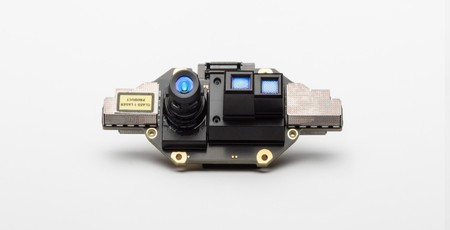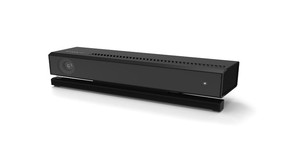
Microsoft has made a surprise announcement during its Build 2018 conference: Its Kinect depth-sensing camera platform is, contrary to previous announcements, not dead, but instead has morphed into a more compact device aimed at developers working in machine vision and artificial intelligence fields.
Developed under the codename Project Natal and launched as an accessory for the Xbox 360 games console, Kinect never caught on with gamers. Plans to make the Kinect a mandatory part of the Xbox 360's successor, the Xbox One, were dropped in the face of consumer disinterest, and in October last year Microsoft confirmed that manufacturing of the Kinect had ceased.
While the device was never a must-have gaming accessory, though, its abilities found considerable enthusiasm among developers working with computer vision. From sword-fighting robots to an affordable 3D scanner, the Kinect has been used at the heart of a range of interesting projects - projects placed in peril through Microsoft's decision to halt manufacture.
While the core technology inside Kinect lives on as the sensor system for Microsoft's high-priced HoloLens augmented reality system, it appeared that its days as a standalone accessory were over - until late last night, when Microsoft announced Kinect was coming back as a developer-centric accessory tied into Microosft's Azure cloud computing platform.
'During Satya Nadella’s Build keynote, he introduced the world to one such tool that may sound a little familiar: Project Kinect for Azure, explains Microsoft’s Alex Kipman in a LinkedIn post on the matter. 'The technical breakthroughs in our time-of-flight (ToF) depth-sensor mean that intelligent edge devices can ascertain greater precision with less power consumption. There are additional benefits to the combination of depth-sensor data and AI. Doing deep learning on depth images can lead to dramatically smaller networks needed for the same quality outcome. This results in much cheaper-to-deploy AI algorithms and a more intelligent edge.'
The new Kinect sensor, which will also be used on the next-generation HoloLens headset, boasts a range of improvements over its gaming-centric predecessors: a 1,024 x 1,024 resolution sensing area and Ultra HD visible light camera, lower power consumption, dynamic range capturing, a global shutter for improved performance in sunlight, depth calculation resistant to power supply variation, and a low peak current which drops the overall cost.
Unfortunately, there's no indication that Microsoft plans to make the new sensor available as an off-the-shelf USB-connected accessory, as it did with previous Kinect products. Instead, the company appears to be planning to release the Kinect device as a module for integration into other products - all powered, naturally, by the Azure cloud platform.
More information on Project Kinect for Azure is available on the official website.

MSI MPG Velox 100R Chassis Review
October 14 2021 | 15:04








Want to comment? Please log in.